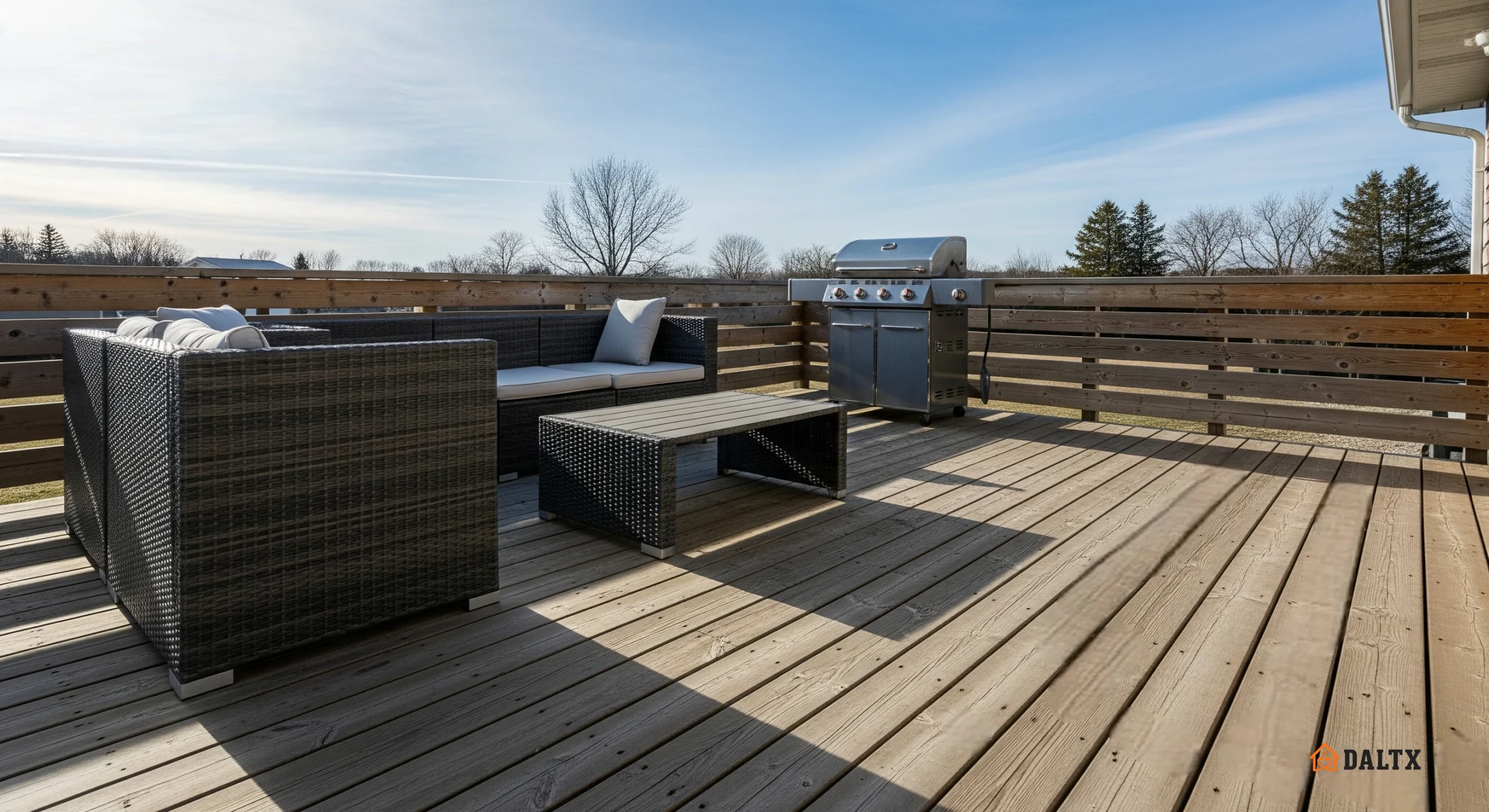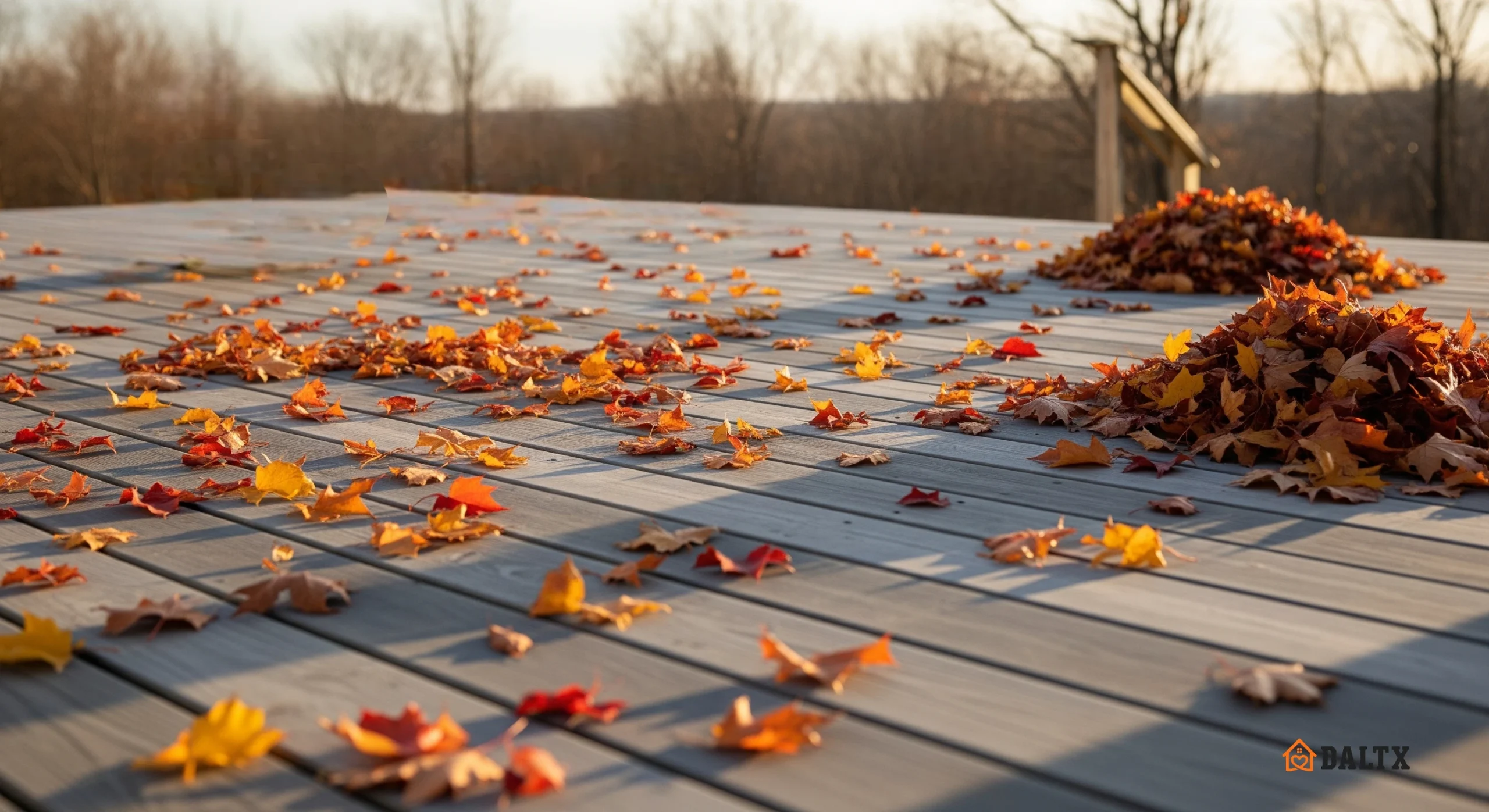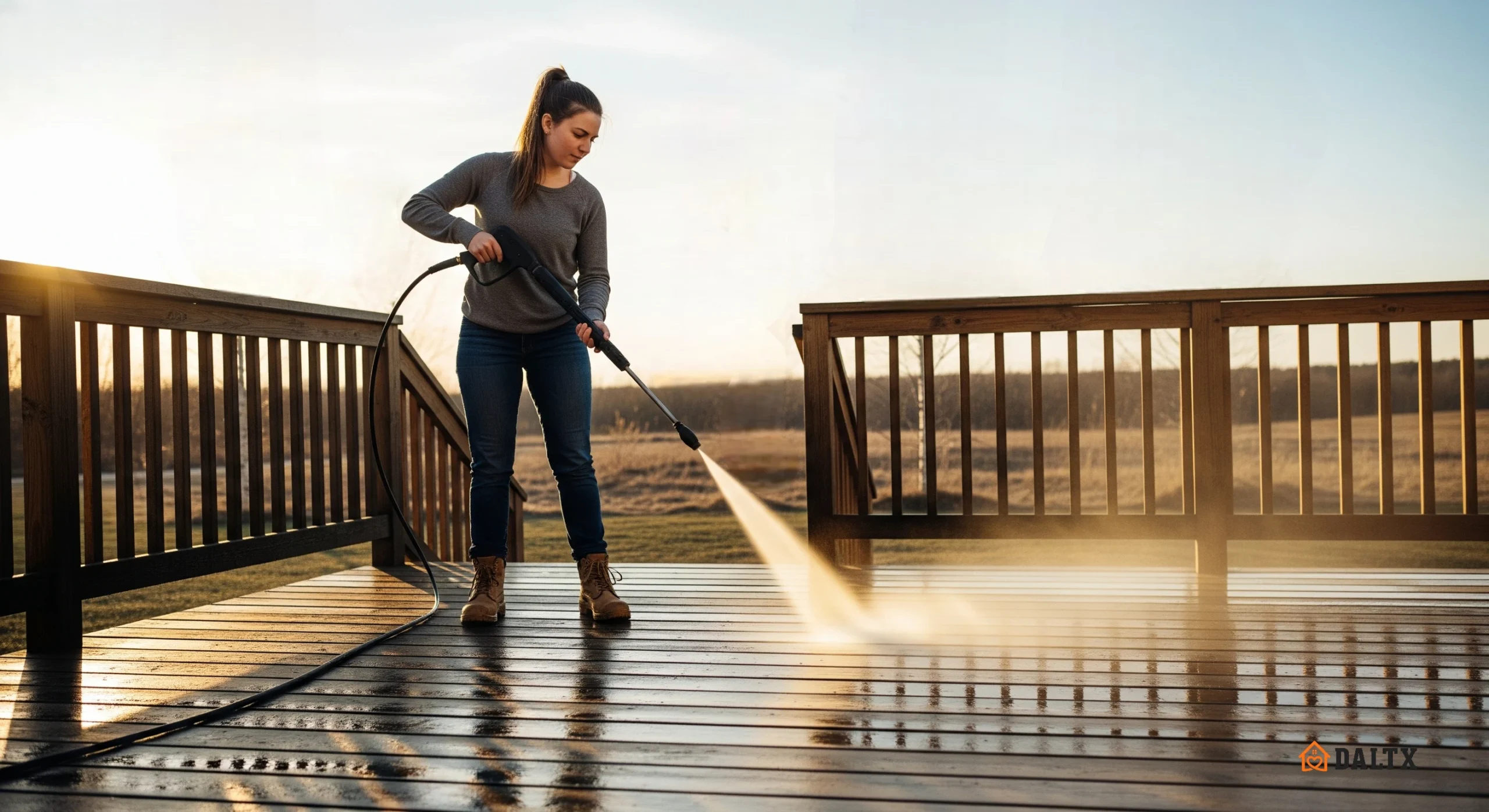Keeping your deck in shape all year helps it last longer and keeps everyone safe. Whether you’re flipping burgers in July or bundled up in January, your deck should handle heat, rain, and cold without any drama.

From blazing sun to frosty mornings, here’s a simple plan to keep your deck ready for every season.
Why Seasonal Deck Maintenance Matters
Regular maintenance keeps your deck looking great and prevents small issues from becoming costly repairs. If you skip maintenance, you may see cracked boards, loose fasteners, and faded finishes after tough weather. Knock out a few seasonal tasks to block summer UV, fall rain, and winter snow and ice, and you will keep the surface safer underfoot.
Your deck material determines the workload, and that affects how you maintain it. Wood needs periodic cleaning and a fresh coat of penetrating stain or water repellent, while most capped composite and PVC decks only need an occasional wash. Do a quick seasonal check for loose hardware, soft spots, and wobbly rails. Those five minutes could add years to your deck’s life and save you money down the road.
Get Your Deck Summer-Ready

Summer is peak deck season, and sun and heat can be tough on bare wood and worn finishes. Use a high-quality UV-blocking stain or clear water repellent on wood when the boards are dry and the temperature is between about 50 °F and 90 °F, so the finish cures evenly. For composite or PVC decks, follow the manufacturer’s directions, since most capped boards don’t require sealing and usually just need a good cleaning.
Give your deck a deep clean before summer kicks in so the surface is ready. Scrub with a deck cleaner or use a pressure washer on low, around 500 to 1,200 PSI with a 40-degree tip. And keep the wand moving along the grain to avoid scarring the wood. Once it’s dry, check for popped screws, lifted boards, and loose posts, then tighten or replace any hardware as needed.
Choose furniture that can handle heat and sudden storms, and set protective pads under the legs to prevent dents and stains. Use breathable covers for cushions and store fabrics in a dry bin to prevent mildew. If you have a grill, place a fire-resistant mat underneath, keep it a safe distance from railings and siding, and always follow local fire regulations.
Fall Prep: Protecting Your Deck Before the Chill

When leaves start dropping, keep your deck clear because wet piles can stain wood or composite and make the surface slippery. Sweep often or use a blower, and clean out the gaps between boards so water can drain properly.
Fall is a great time to seal bare wood before winter arrives. A fresh coat of penetrating stain or clear water repellent helps block the moisture that freezes and thaws. A cycle that causes checks and splits over time. Capped composite doesn’t need sealing, and a gentle wash is all it takes to keep it looking new.
Winterizing Your Deck for Cold Weather

Snow and ice are tough on decks, especially when water sits for days without drying out. Shovel right after storms using a plastic shovel, and push along the direction of the boards so you don’t catch the edges. Avoid rock salt on natural wood since it’s corrosive, and check your manufacturer’s recommendations before using ice melt on composite. If you need traction, sprinkle sand or use an ice melt labeled safe for your deck material, such as calcium chloride for most capped composites.
For extra protection, use a breathable, fitted winter cover, since trapped moisture is the real enemy. Before the deep freeze hits, treat any exposed wood with a coat of water-repellent finish (or another water repellent), and make sure the house flashing is secure so meltwater can’t sneak behind the ledger.
Spring Deck Prep and Bring Your Deck Back to Life

Once it warms up, start with a thorough clean to wash away winter grime and pollen. Use a cleaner made for your material, rinse well, and let the boards fully dry.
Spring is the best time to restain or reseal wood if water no longer beads on the surface. Pick a dry stretch and apply thin, even coats so the finish lasts longer and cures evenly. Composite and PVC decks usually just need a wash with mild soap and a soft brush to remove chalky film or dirt.
Finish with a safety check before the season gets busy. Tighten loose rails, reset any proud fasteners, and inspect the ledger, joist hangers, and posts for rust or rot. Replace any soft or cracked boards and test GFCI outlets and lighting to make sure everything’s ready to go.
Choosing Deck Materials That Work All Year
If you’re building new or replacing old boards, choose materials that fit your climate and match how much maintenance you’re willing to do. Popular options include pressure-treated lumber, cedar, redwood, tropical hardwoods, composite, PVC, and aluminum.
Pressure-treated lumber is affordable and strong, but it needs regular cleaning and an occasional stain to keep it looking good. Cedar, redwood, and tropical hardwoods offer rich color and natural beauty and can last for years with the right oil or stain, though they still need routine care. Composite and PVC decking are low maintenance, resist rot and splinters, and aluminum is extremely durable and sheds water quickly, making it ideal for areas with wide weather swings.
Stone deck vs composite materials each have their pros and cons. Stone and paver patios also make great outdoor living spaces, but they aren’t decking since they sit directly on the ground. If you’re choosing between a raised deck and a patio, consider drainage, frost, and how you’ll use the space, then go with what best fits your site.
Make Your Deck a Year-Round Hangout
Add a few comfort upgrades so the deck works in every season. In winter, outdoor heating such as a code-compliant fire pit or outdoor heater keeps cold nights cozy, and in summer, shade from a pergola, an umbrella, or a retractable awning keeps things cool.
Finish your setup with inviting details that pull their weight. Choose comfortable seating, quick-dry outdoor rugs, and string lights that are rated for wet locations. Whether you are hosting friends or unwinding after work, these touches make the deck feel like part of your home.
Conclusion
A little seasonal care keeps your deck looking good and safe to use. With a quick checklist for summer, fall, winter, and spring, you will spend less on repairs and get more time outside. No matter what your deck is made of, steady cleaning, quick fixes, and the right finish will keep it ready for any weather for years.